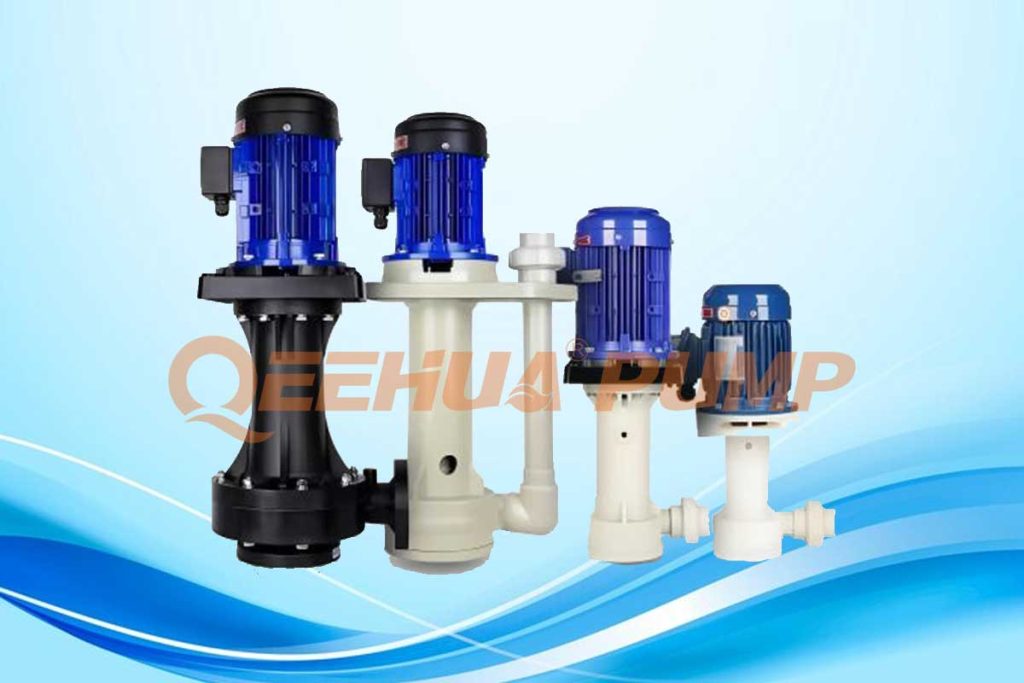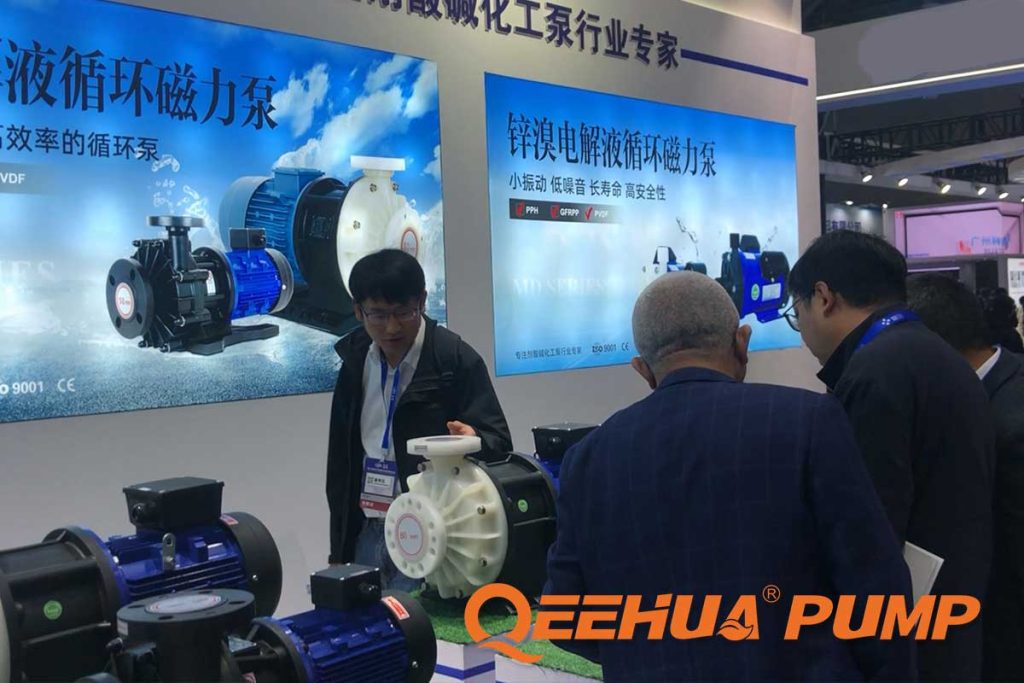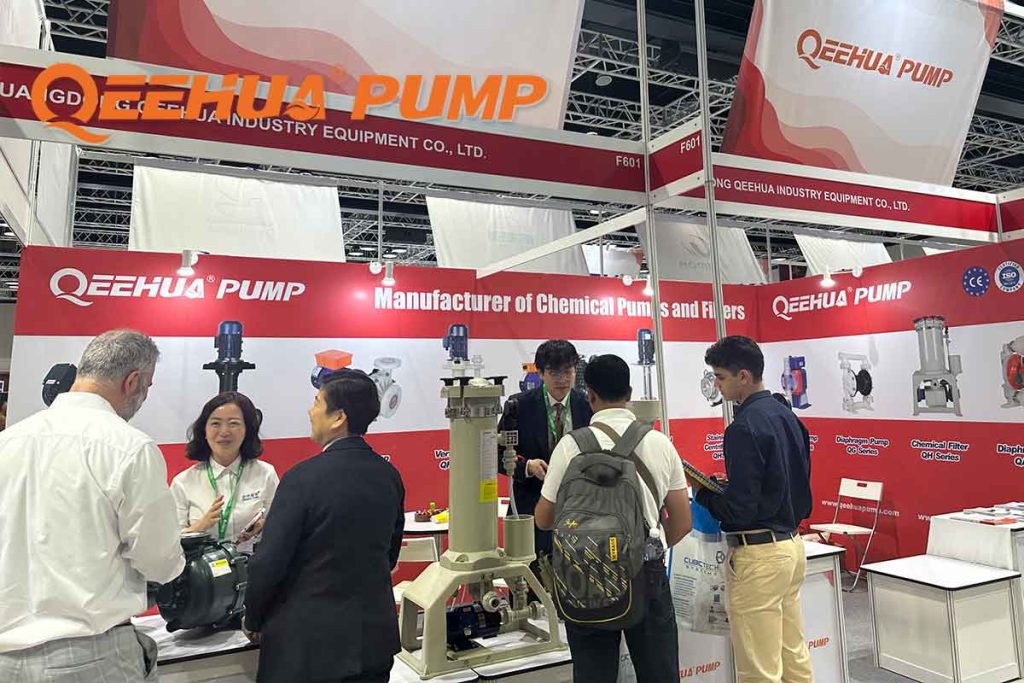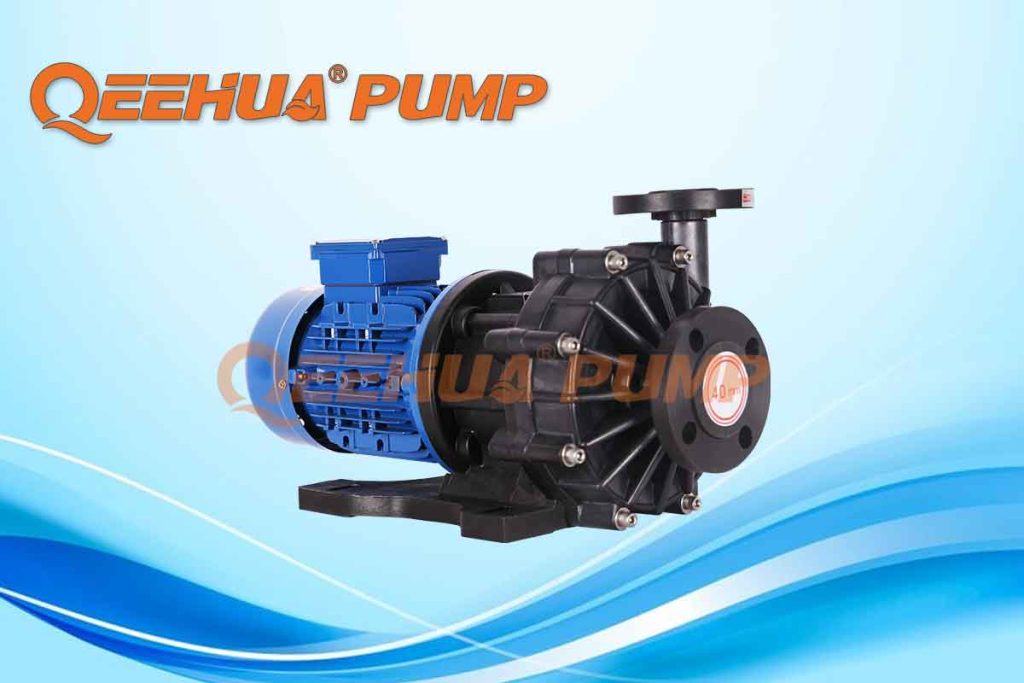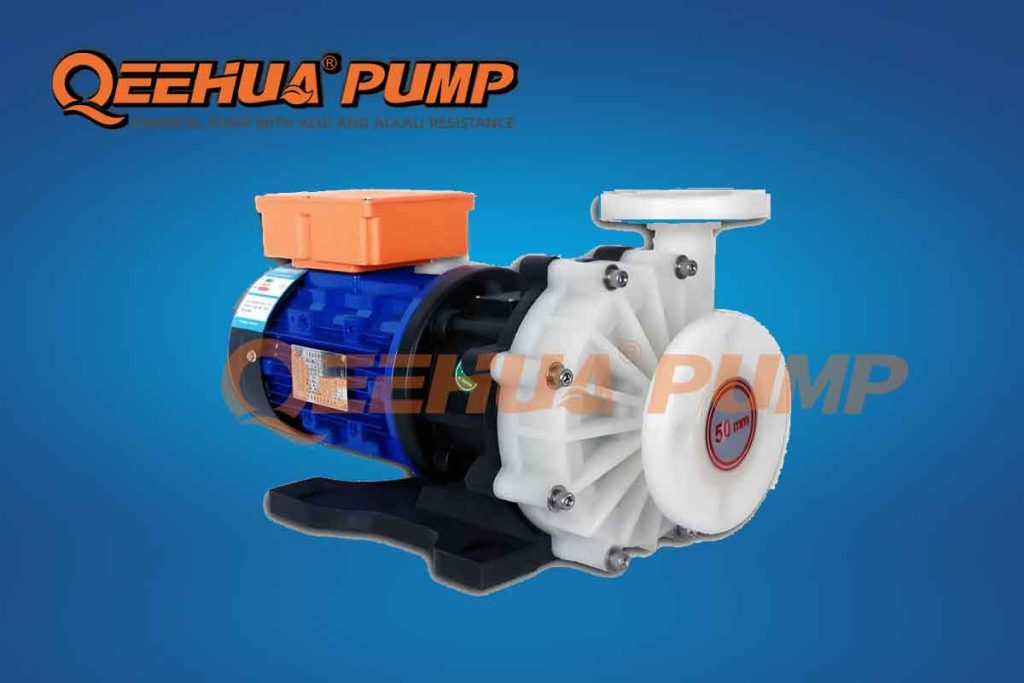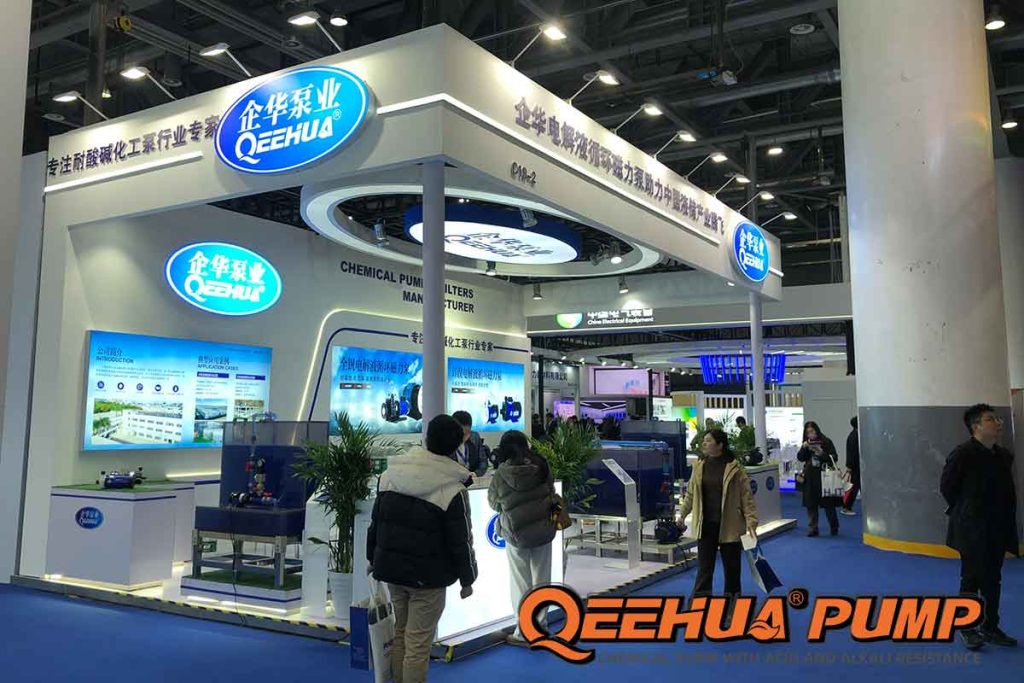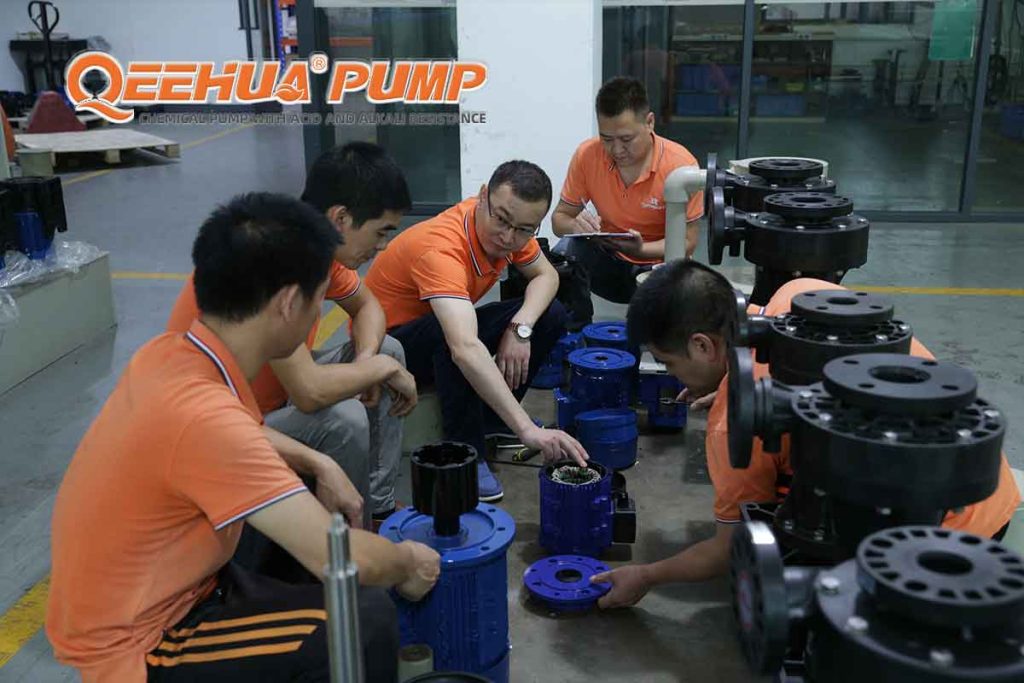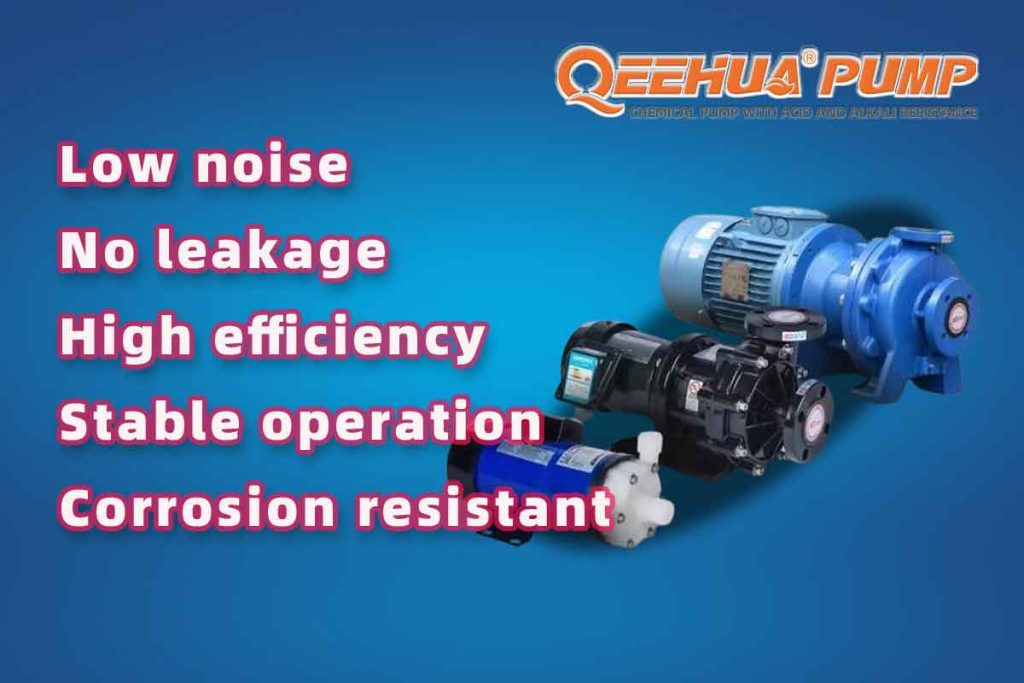Introduction
Corrosion-resistant pumps refer to pumps that can transfer corrosive media from one location to another. Corrosion-resistant pumps are widely used in chemical, PCB, electroplating, coating, flow energy storage, surface treatment industries, etc. for transporting various corrosive media.
Vibration may occur during the operation of corrosion-resistant pumps, which could adversely affect the performance, reliability and safety of the pump. When the pump experiences excessive vibration, it may lead to reduced efficiency, increased wear and premature failure of pump components. This article will focus on the impact of vibration on corrosion-resistant pumps.
Main Causes of Vibration in Corrosion-Resistant Pumps
There are many reasons for vibration in corrosion-resistant pumps, mainly including:
- Impeller imbalance: The impeller of a corrosion-resistant pump may become imbalanced during the process of transporting chemical fluids due to non-uniform media, chemical reactions, etc., resulting in vibration issues.
- Misaligned couplings: Misalignment between the pump shaft and motor shaft could cause shaft vibration in the corrosion-resistant pump, which may be more sensitive for the special materials used.
- Worn bearings: The bearings of a corrosion-resistant pump work in corrosive media and are prone to corrosion and wear, and worn bearings may cause vibration problems.
- Cavitation: Cavitation may occur in corrosion-resistant pumps during transportation of special media, leading to non-uniform fluid flow and vibration.
- Hydraulic imbalance: Hydraulic imbalance occurs when the flow distribution on the impeller is uneven, causing shaft vibration in the pump and damage to impellers and other components.
- Torsional resonance: Torsional resonance may occur when the natural frequency of the pump shaft matches the vibration frequency, resulting in vibration along the torsion direction and damage to shafts and other parts.
- Pulsating flow: Flow pulsation may be caused near the shut-off head under certain conditions.
Hazards of Pump Vibration
Pump vibration is not only a surface phenomenon, but also a dangerous signal indicating problems with the pump itself or adjacent pump systems. Excessive vibration can lead to reduced efficiency, increased wear and premature failure of pump components. For corrosion-resistant pumps, vibration problems may cause fatigue and damage of specific materials, affecting pump reliability. Over-limit vibration of corrosion-resistant pumps can pose the following hazards:
- Pump units cannot run normally: Vibration can prevent pumps from running normally, impacting the entire industrial process.
- Induce vibration of motors and pipelines: Excessive vibration is transmitted to adjacent motors and pipelines, potentially causing mechanical failures and safety hazards.
- Damage to bearings and other components: Vibration imposes additional stresses on internal components like bearings, which can lead to premature failure.
- Loosened connections, foundation cracks or motor damage: Vibration affects component connections and may cause loosening, cracking of the foundation structure, or even motor damage.
Prevention and Solutions
Prevention
- Regular inspection and maintenance: Identify and address potential issues early through regular checks and servicing.
- Proper installation: Ensure the pump unit is installed correctly according to the manufacturer’s recommendations.
- Vibration monitoring: Use vibration monitoring equipment for regular measurements to detect abnormalities promptly.
- Training personnel: Ensure operators and maintenance staff are properly trained to understand vibration hazards and appropriate response measures.
Solutions
- Clean intake ports: Keep intake ports clean to prevent cavitation.
- Replace impellers: Replace imbalanced or damaged impellers promptly.
- Lubricate bearings: Use suitable lubricant to keep bearings in good condition during operation.
- Check shaft alignment: Ensure the pump shaft is well-aligned to reduce unnecessary vibration.
- Improve pipeline design: Enhance pipeline design to minimize flow pulsation and fluctuation.
- Use suction stabilizers: Employ suction stabilizers where needed to ensure smooth fluid flow.
- Conduct regular vibration analysis: Identify potential issues early through periodic analysis and take measures.
QEEHUA PUMP’s Solutions
As a professional manufacturer of chemical pumps, QEEHUA PUMP is committed to solving pump vibration issues. With the integrated casting technology of internal magnet and rubber lining, QEEHUA PUMP products always lead the industry in terms of technical performance and quality. The company recommends customers conduct regular maintenance when using corrosion-resistant pumps to ensure normal operation and reduce vibration impact on pump performance.
Conclusion
Pump vibration is an issue that deserves serious attention as it can lead to equipment failure, safety hazards and reduced production efficiency. Through measures such as periodic inspection, proper installation, personnel training, vibration monitoring and prevention/solution implementation, vibration problems can be effectively mitigated to ensure stable operation of pump systems. Timely analysis and resolution are also crucial for vibration issues that have already occurred to prevent further escalation of problems.




